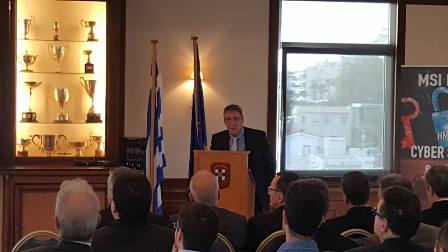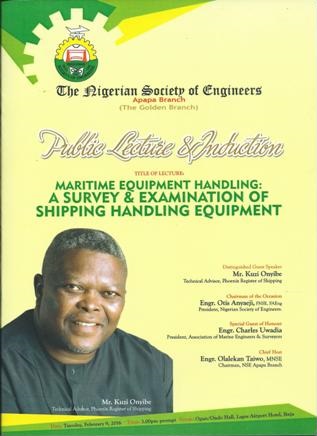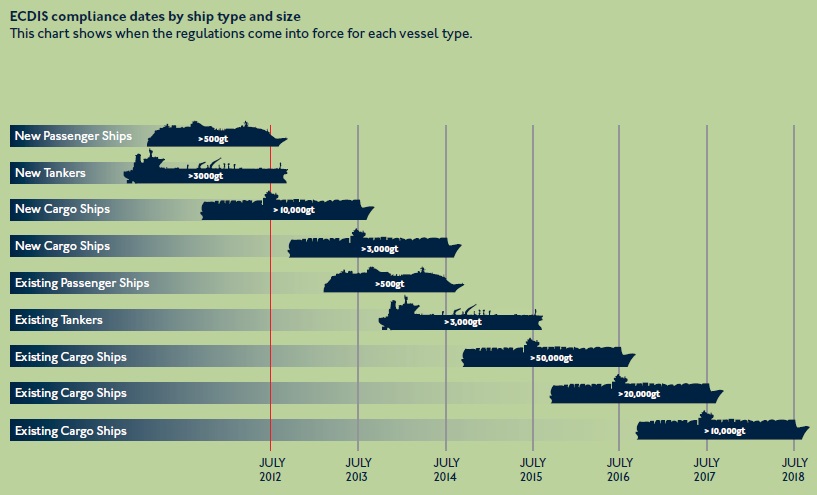PH.R.S. - United States Coast Guard Approval
We would like to inform you that our Organization has been recognized by the United States Coast Guard according to the Code of Federal Regulations (CFR), Title 46 – Chapter.1 (A) 2.45 to perform as a Classification Society in the United States of America. The recognition was obtained after the evaluation of our Organization by the U.S.C.G and it allows any vessel classed by Phoenix Register of Shipping to call, be surveyed and carry out repairs at ports of the United States.
Please see the relevant Authorization table and more information about it can be found on http://www.uscg.mil/hq/cg5/acp/
Cyber Security & Shipping Industry
On Monday, February 15th 2016, our CEO - Mr. Anastasios Arvanitakis - attended the conference of the Marine International Security (MSI) Hellas: "Cyber Security: The Modern Threat Of The Shipping Industry".
The confernce was held at the Yacht Club of Greece in Piraeus, and Mr. Arvanitakis as one of the main speakers gave a speech on the topic of "Cyber-Security & Everyday Life in the Corporate Environment".

NL 145/16 | Black Sea MOU - New Inspection Regime
Refers to: Ship Owners / Operators, PH.R.S. Representatives
Action Date: 1st January 2016
At the 16th meeting of the Port State Control Committee in Batumi, Georgia, April 2015, the Memorandum of Understanding on Port State Control in the Black Sea Region (BS MOU) decided to introduce a New Inspection Regime for selection of ships from 1st January 2016 to harmonize further its risk based targeting and inspection system with the leading memorandums, namely Paris MOU and Tokyo MOU, to the highest level.
The existing ship targeting system adjusted to accommodate additional generic parameters (e.g. Flag, RO, and Company performances), weighting points for each parameters, amendment of levels of the ship risk profile and determination of frequency of inspection of for each risk level, benefiting experience after four years of in depth comparative study of the leading PSC inspection regimes and considering discussion at IMO on the small flags.
The BS MOU New Inspection Regime, BS-IR (2016), consists of combination of Ship Risk Profile and Time Windows for clear indication of the order of priority in selection of ships for inspections.
Black Sea Information System (BSIS) calculates and displays outputs of sections 1 to 3 using inspection records of member authorities stored in the BSIS for members use at the time of selection of ships for inspections.
Attached herewith please find the complete Press Release from Black sea MOU and the Information Sheet of the BS MOU New Inspection Regime.
On Tuesday, February 9th 2016, our Exclusive Surveyor and Manager of our Brach Office in Lagos, Nigeria, Mr. Kuzi Onyibe attended and was the Distinguished Guest Speaker at the Public Lecture & Induction - an event held by The Nigerian Society of Engineers - with lecture title “Maritime Equipment Handling: A Survey & Examination of Shipping Handling Equipment”.

Refers to: Ship Owners / Operators, PH.R.S. Representatives
Applicability: Vessels equipped with Ballast Water Tanks Operating in United States Waters
The United States Coast Guard (USCG) has recently published a Marine Safety Information Bulletin announcing updates to their ballast water management program. The bulletin includes:
- guidance to comply with Title 33, Code of Federal Regulations Part 151, Subparts C and D
- a definition of the ‘first scheduled dry-docking’
- a revision to the terms of the extended compliance date – a vessel’s extended compliance date will now be the ‘next scheduled dry-docking’ after the vessel’s original compliance date.
The text of USCG Title 33, Code of Federal Regulations Part 151, Subparts C and D can be found at the following links:
- 33 CFR Part 151, Subpart C - Ballast Water Management for Control of Nonindigenous Species in the Great Lakes and Hudson River: https://www.law.cornell.edu/cfr/text/33/part-151/subpart-C
- 33 CFR Part 151, Subpart D - Ballast Water Management for Control of Nonindigenous Species in Waters of the United States: https://www.law.cornell.edu/cfr/text/33/part-151/subpart-D
As always we remain at your disposal for any further information and clarification.
PH.R.S. Head Office – February 2nd, 2016
The IMO has consolidated previously issued guidance for good practice relating to Electronic Chart Display and Information Systems (ECDIS) into one guidance document, published as Circular MSC.1/Circ.1503 - attached. This Circular gives advice on:
- SOLAS chart carriage requirements
- ECDIS software maintenance
- Operating anomalies identified within ECDIS
- Differences between raster chart display system (RCDS) mode and ECDIS mode
- ECDIS training
- Transitioning from paper charts to ECDIS navigation
- Guidance on training and assessment in the operational use of ECDIS simulators.
- It also includes a list of ECDIS apparent operating and display anomalies, and references to IMO performance standards for ECDIS and other circulars related to ECDIS.
Ship operators, masters and deck officers on ECDIS-fitted ships are encouraged to use this guidance to improve their understanding and facilitate safe and effective use of ECDIS.
With this opportunity we would like to recall ship operators on the ECDIS transition process to assist the planning process.
ECDIS carriage is mandatory on a rolling timetable from July 2012 until 2018.
Existing ships will have to fit ECDIS before the first survey following the implementation date. For new buildings the timetable is based on when the keel is laid.
There are two important exceptions. Existing cargo ships of fewer than 10,000 gross tons won’t require ECDIS. And some flag states may also exempt ships due to be taken out of service within two years of the implementation date.
Please refer to the below image “ECDIS Compliance Dates” for exact information on the due date for installation of ECDIS to all ships.
You can also refer to the attached publication "Are you ready for the new ECDIS regulations? Your nine stage guide to meeting the revised SOLAS requirements" published from Admiralty (UK National Hydrographic service) which we think you will find it interesting.
As always we remain at your disposal for any further information and clarification.
PH.R.S. Head Office - 28 January, 2016

